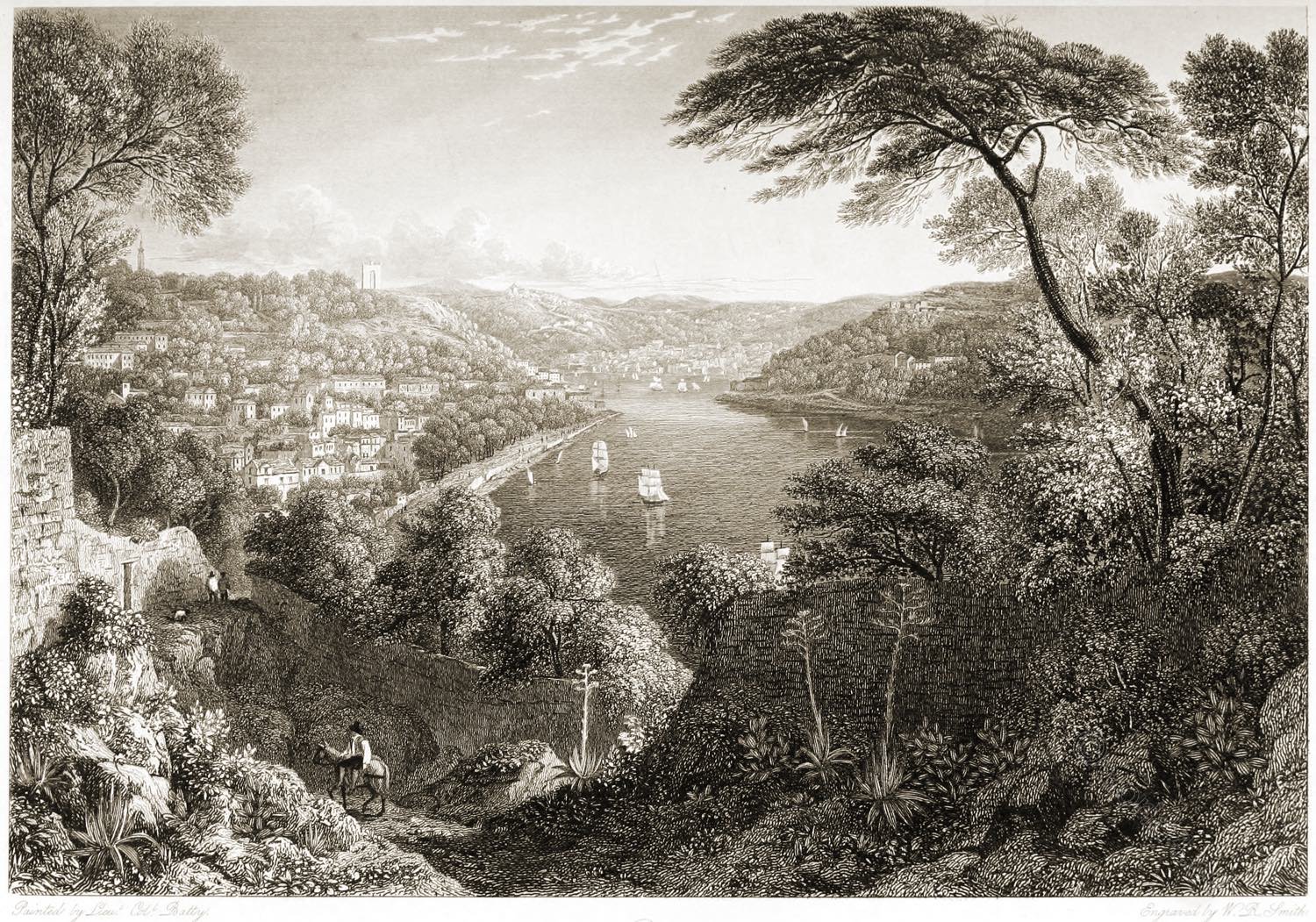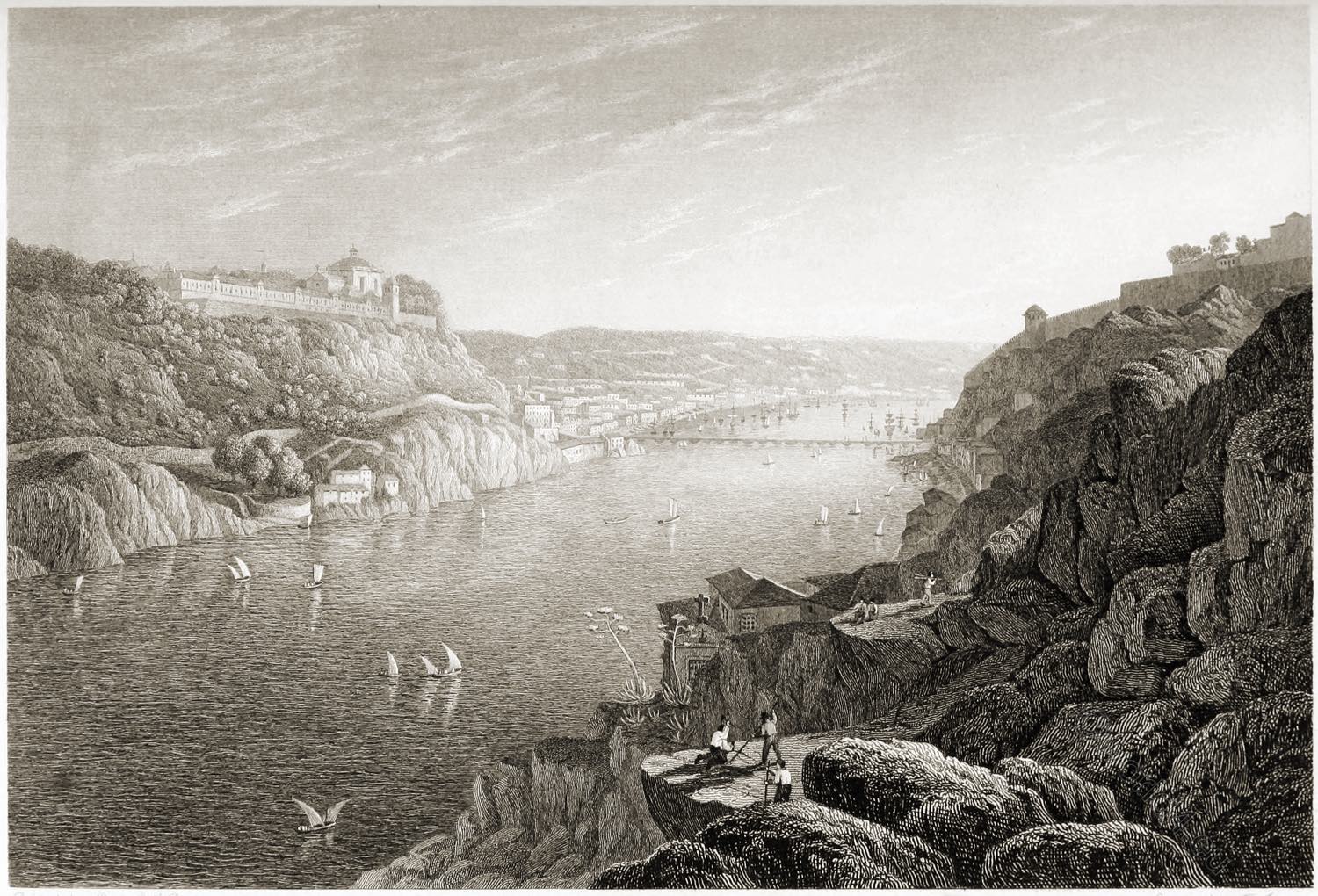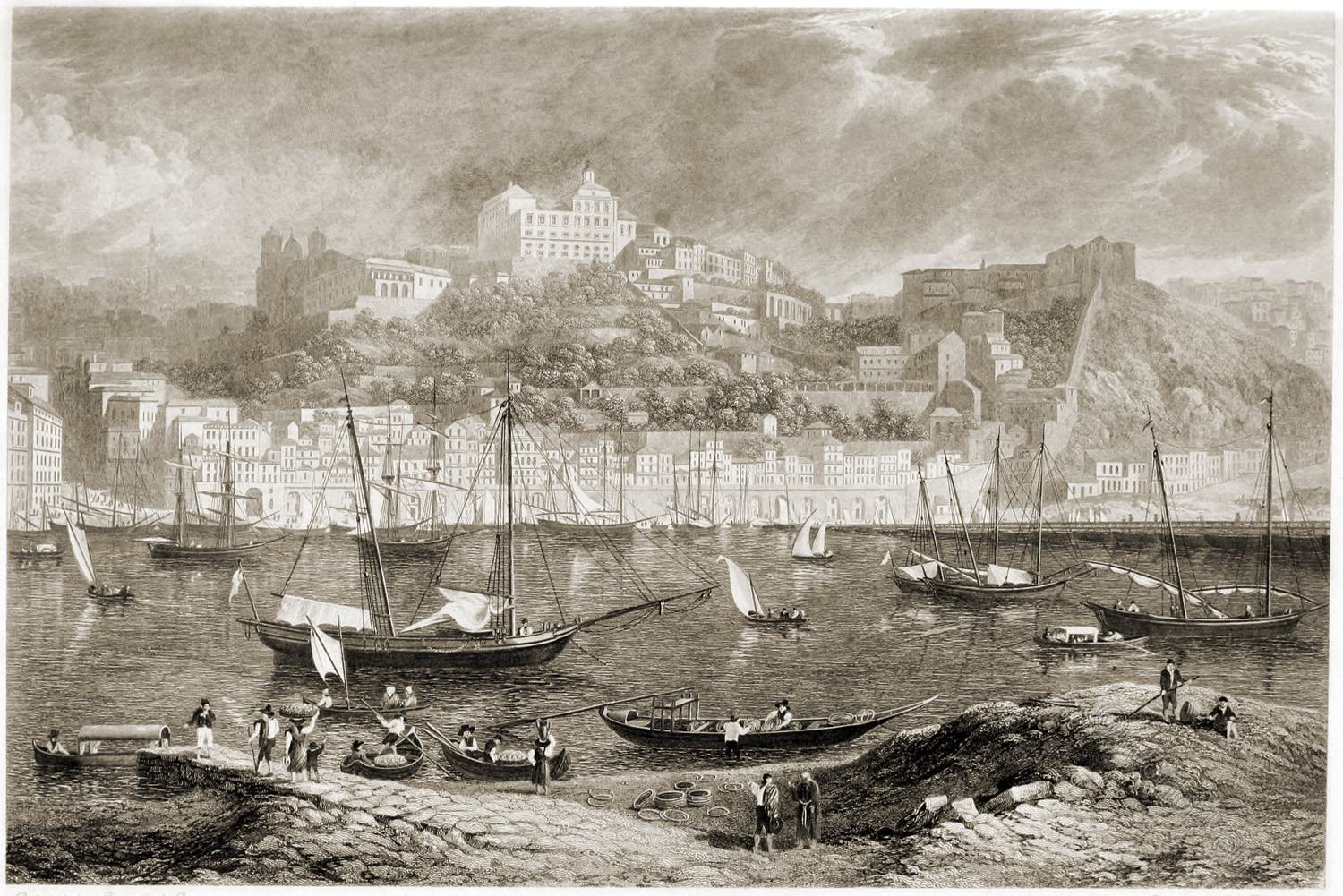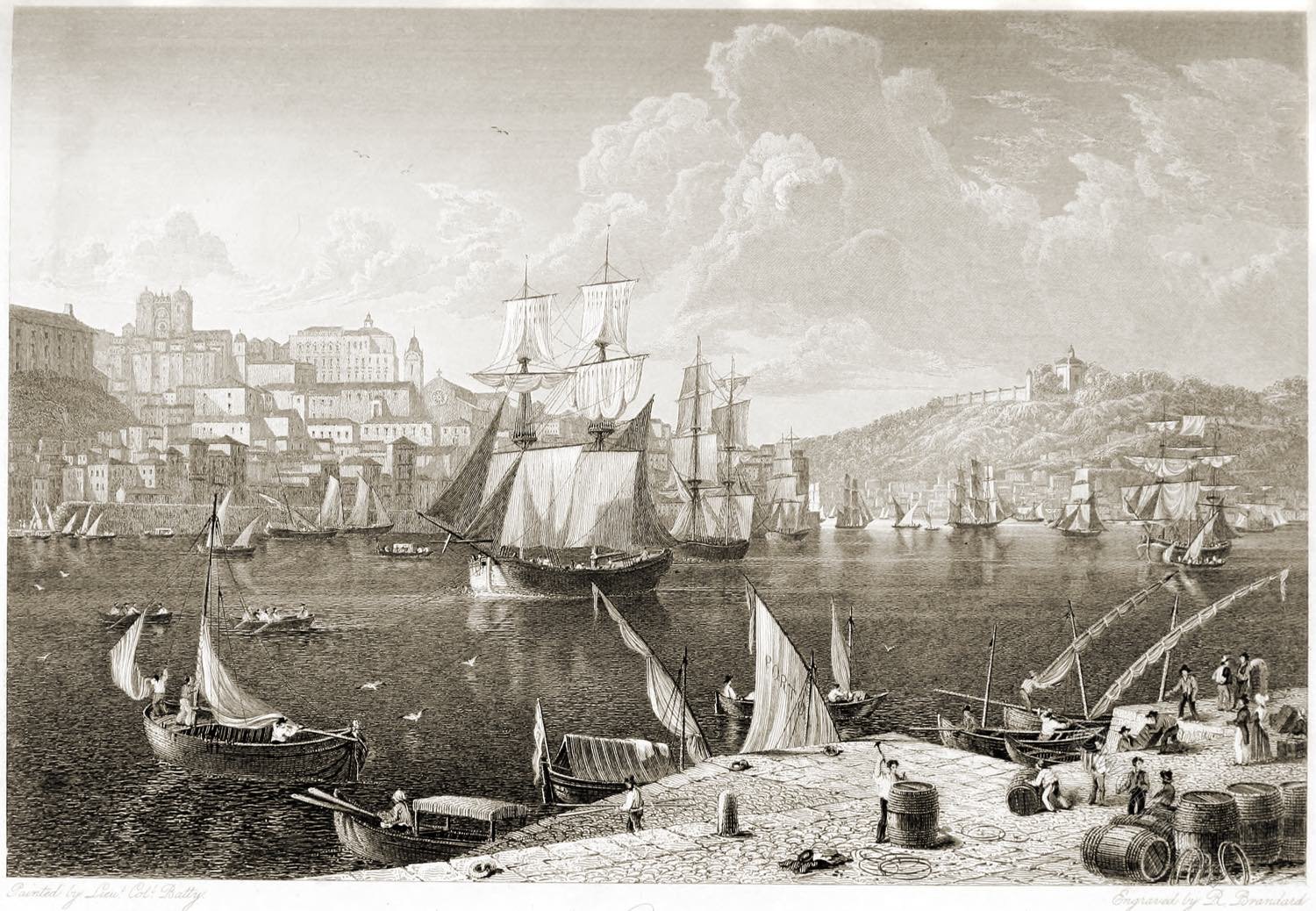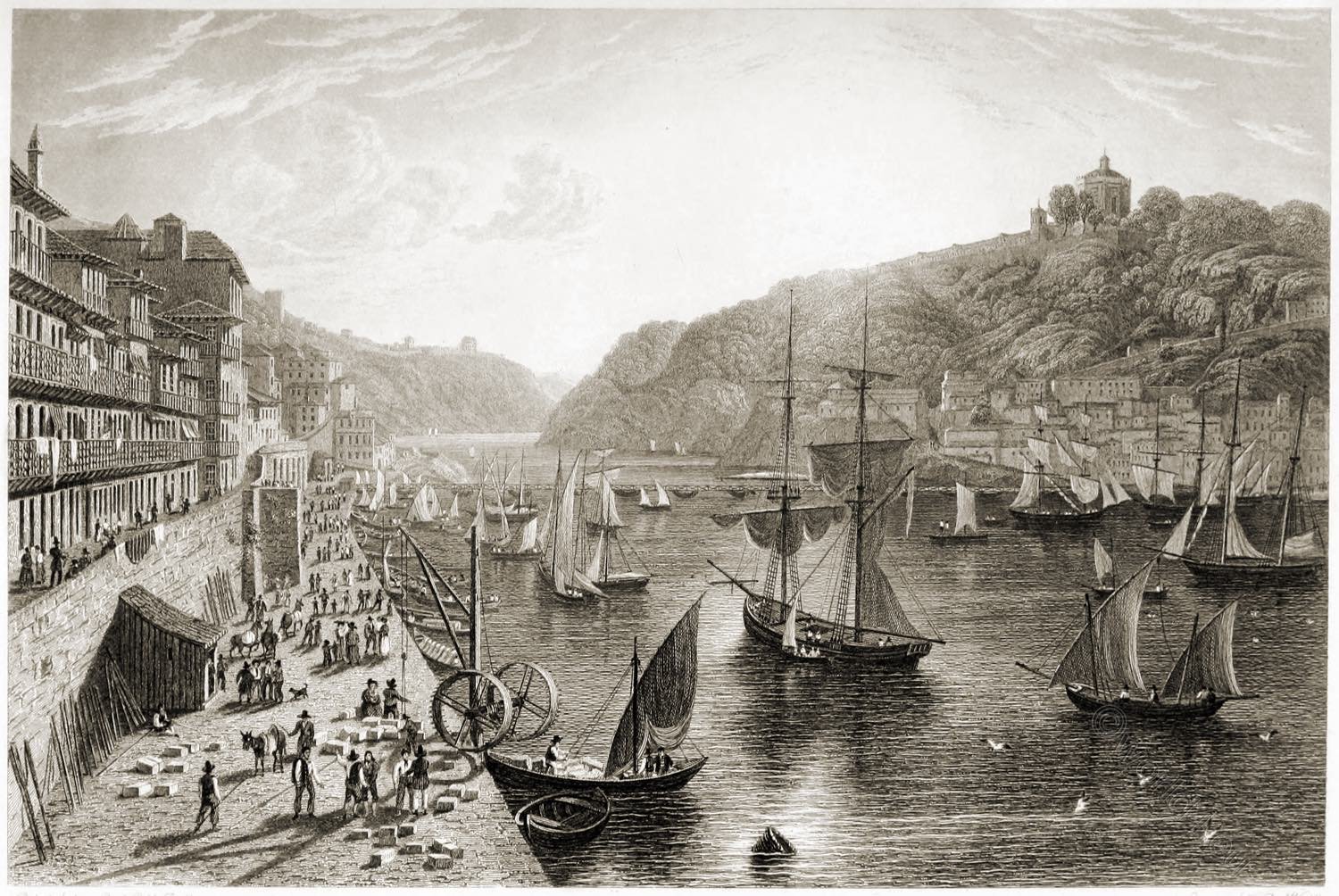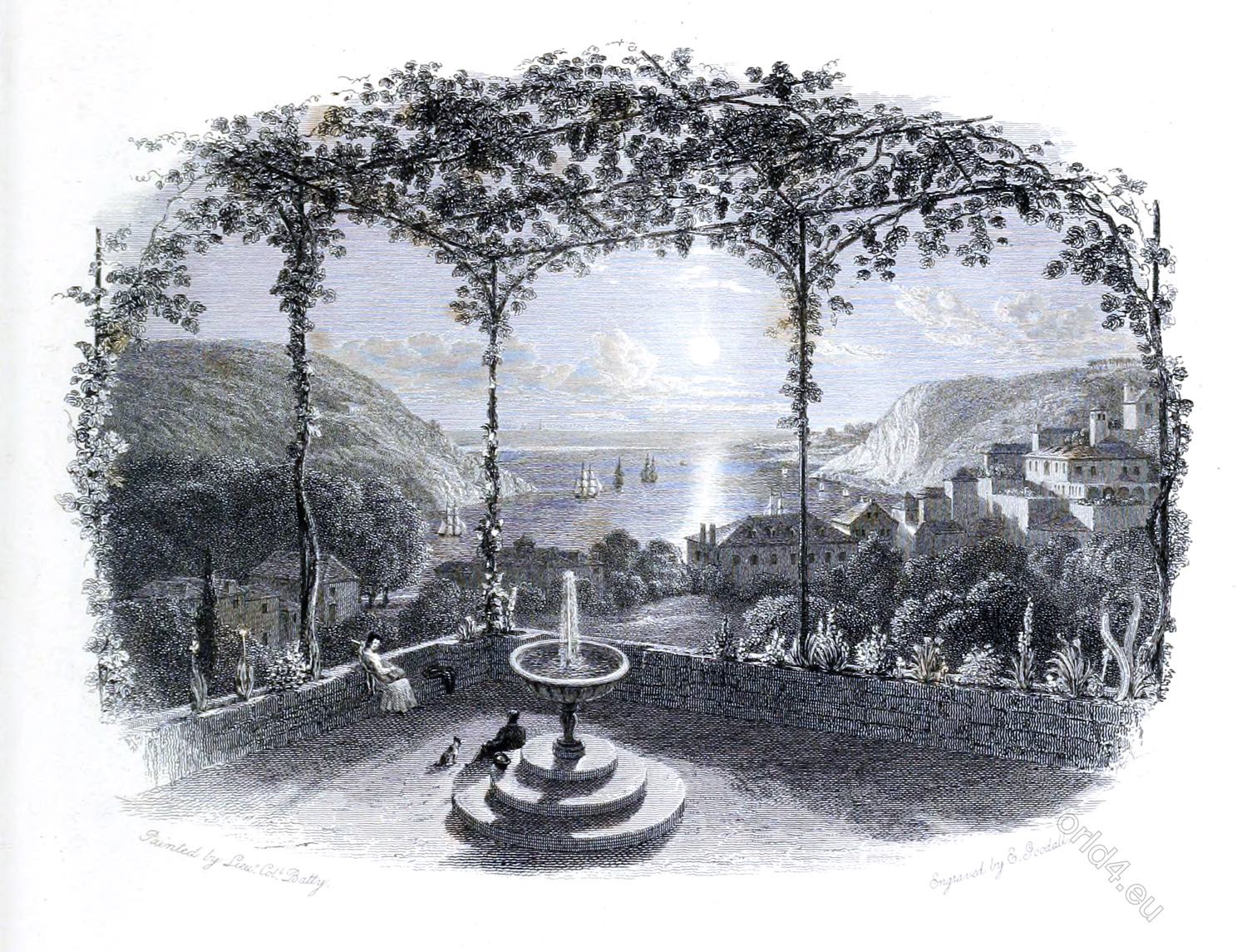
A VIEW OF THE MOUTH OF THE DOURO, FROM MASSARELLOS.
VIGNETTE.
The approach to Oporto by sea is remarkably beautiful. The dangers of the Bar, across the mouth of the river, once passed, a succession of interesting objects present themselves on both sides, as we ascend towards the city.
The little town of St. Joao da Foz stands on the north bank, close to the sea. The river, immediately within the bar, expands into the appearance of a lake. A little higher up it is narrowed by two abrupt hills.
On the point of that which appears on the left in this vignette, and which is called the Cavaquinho, is the Lazaretto. The other, on the right, terminates in a precipice of bright hard sandstone, descending so steeply to the water’s edge, that it is but very recently that a road has been made from Oporto, along the bank of the river, to St. Joao da Foz (São João Baptista da Foz do Douro), by blasting and hewing down a sufficient portion of the rock.
This height, from its precipitous sides, is called the Monte da Arrábida, and forms the western boundary of a lovely valley, opening upon the Douro, covered with the Quintas, or villas, of the wealthier inhabitants of the adjoining city.
The view given in the vignette is taken from the garden of the Quinta of Senhor Joao Pacheco, formerly the residence of the hospitable English family of the Warres. The fountain under the arbor is introduced as characteristic of the style of ornament often met with in this luxuriant country. The large and beautiful Quinta seen on the right, is the property of Senhor Antonio da Carvalho. Most of these Quintas command delightful prospects of the river and of the Atlantic Ocean; and the splendid effects produced on these scenes at sunset, in this glowing climate, are not easily imagined, and difficult to be described.
Source: Select views of some of the principal cities of Europe by Robert Batty. London: Moon, Boys, and Graves, 1832.
Continuing
OPORTO.
The Mouth of the Douro from Massarellos.
Oporto, from the Monte D’Arabida.
Oporto, from the Quay of Villa Nova.
Oporto, from the Custom-House Quay.
Discover more from World4 Costume Culture History
Subscribe to get the latest posts sent to your email.

